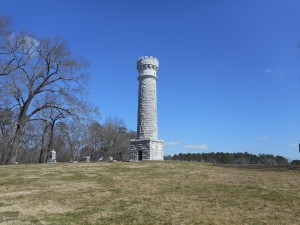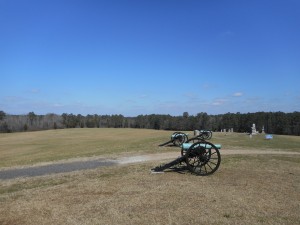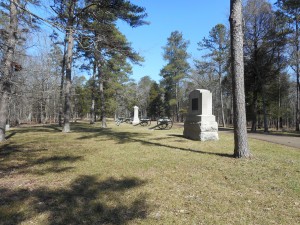Chickamauga and Chattanooga National Military Park was established in 1895 as one of the first four national military parks. The existence of this conserved space came about due to one human activity —- war. It was preserved to commemorate a battle between the Union and the Confederacy during the Civil War. This dispute was part of a larger fight for the control of Chattanooga, a major railroad hub during this era. Their battles took place at these fields among forests that used to be farmlands. Later in the Spanish–American war this location was utilized as a training center for troops because of the vast space and the proximity to the railroads. All of these historical factors led to the eventual establishment of this national military park. Since the major function of this park is to preserve the

existing landscape as it would have looked during the war, it has experienced minimum changes. Nowadays, Local residences are strictly prohibited to change the landscape and all farming exercises are restricted. Within the fields of this military park there are hundreds of commemorative features such as monuments, battlefield markers, and cannons that are contributed by families of veterans and military infantries.

Despite being preserved in a state of historically relevant beauty, Chickamauga and Chattanooga Military Park does raise an important question about how much human modification is too much when trying to keep an ecosystem in a previous state. While there is no doubt about the amount of environmental destruction that battles and wars bring about, there is a debate currently going on concerning what to do with the historical significant lands left behind in their wake.

One paper by the National Park Service illustrated the two sides perfectly: “The need to maintain a historic battlefield setting within a piedmont-forest ecosystem creates two potentially opposing management strategies… Park staff must continually balance natural resource protection (e.g., protecting large tracts of native forest) with cultural landscape preservation (e.g., preventing regeneration to preserve battlefield scenery)”. Here we have lands that are only conserved for their historical significance, thereby already providing a protected semi-natural ecosystem for flora and fauna, but that also have the potential for increased separation from the human population and tourism. It is this economic incentive versus ecological benefit analysis which will continue to be an ongoing debate in many historical battlefields, including Chickamauga.
Authored by Ruiyuan Shi and Julie Fowler
References:
Cloudland Canyon State Park. (n.d.). Retrieved April 12, 2016, from http://www.gastateparks.org/CloudlandCanyon
Chickamauga & Chattanooga National Military Park. (n.d.). Retrieved April 12, 2016, from http://www.chattanoogafun.com/members/attractions/chickamauga-chattanooga-national-military-park/868
Using landscape analysis to evaluate ecological impacts of battlefield restoration; Research Reports; Park Science 25(1), Summer 2008 (ISSN 1090-9966, National Park Service, U.S. Department of the Interior). (2008, July 19). Retrieved February 18, 2016, from http://www2.nature.nps.gov/ParkScience/index.cfm?ArticleID=217